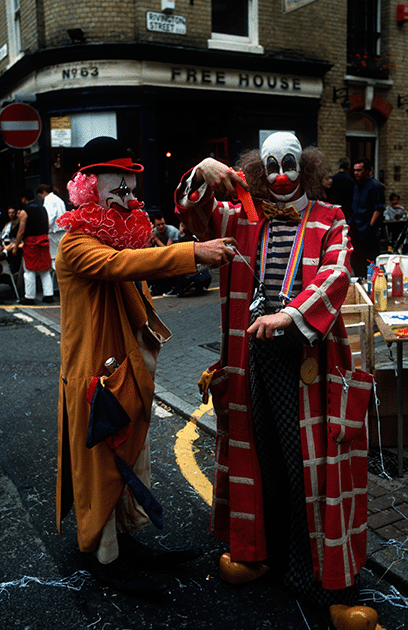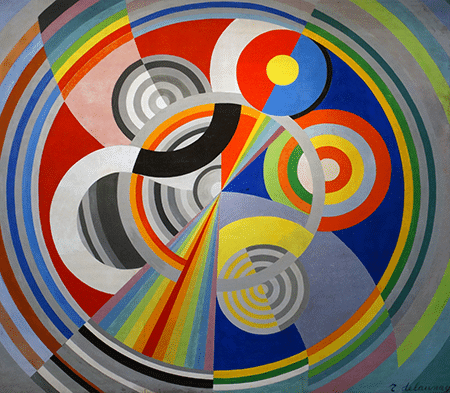20th Century & Contemporary Art Evening Sale
London Auction 30 June 2022
1
Antonia Showering
We Stray
Estimate £40,000 - 60,000 ‡♠
Sold for £239,400
Create your first list.
Select an existing list or create a new list to share and manage lots you follow.
2
Shara Hughes
Wavy Navy
Estimate £250,000 - 350,000 ‡
Sold for £252,000
Create your first list.
Select an existing list or create a new list to share and manage lots you follow.
3
Lauren Quin
Numbness
Estimate £50,000 - 70,000 ‡
Sold for £201,600
Create your first list.
Select an existing list or create a new list to share and manage lots you follow.
4
Caroline Walker
Afters
Estimate £60,000 - 80,000 ‡♠
Sold for £315,000
Create your first list.
Select an existing list or create a new list to share and manage lots you follow.
5
Tschabalala Self
Carma
Estimate £120,000 - 180,000 ‡
Sold for £252,000
Create your first list.
Select an existing list or create a new list to share and manage lots you follow.
6
María Berrío
The Riders II
Estimate £150,000 - 200,000 ‡
Sold for £809,000
Create your first list.
Select an existing list or create a new list to share and manage lots you follow.
7
Flora Yukhnovich
Moi aussi je déborde
Estimate £250,000 - 350,000 ♠
Sold for £1,716,500
Create your first list.
Select an existing list or create a new list to share and manage lots you follow.
8
Simone Leigh
Clarendon
Estimate £800,000 - 1,200,000 ‡
Sold for £869,500
Create your first list.
Select an existing list or create a new list to share and manage lots you follow.
9
Louise Bourgeois
Couple
Estimate £450,000 - 550,000 ‡♠
Sold for £869,500
Create your first list.
Select an existing list or create a new list to share and manage lots you follow.
10
Michelangelo Pistoletto
Ragazza in minigonna / Ragazza seduta per terra
Estimate £1,800,000 - 2,200,000 ‡♠
Sold for £2,000,000
Create your first list.
Select an existing list or create a new list to share and manage lots you follow.
11
Cy Twombly
Untitled
Estimate £3,000,000 - 4,000,000 ‡
Sold for £2,684,500
Create your first list.
Select an existing list or create a new list to share and manage lots you follow.
12
Nicolas de Staël
Marine
Estimate £1,700,000 - 2,200,000 ‡♠
Sold for £1,293,000
Create your first list.
Select an existing list or create a new list to share and manage lots you follow.
13
This lot is no longer available.
14
Stanley Whitney
May Day
Estimate £400,000 - 600,000 ‡
Sold for £627,500
Create your first list.
Select an existing list or create a new list to share and manage lots you follow.
15
Ouattara Watts
№ 1 For Miles
Estimate £80,000 - 120,000 ‡
Sold for £113,400
Create your first list.
Select an existing list or create a new list to share and manage lots you follow.
16
This lot is no longer available.
17
George Condo
Black Jack Sally
Estimate £700,000 - 1,000,000 ‡
Sold for £809,000
Create your first list.
Select an existing list or create a new list to share and manage lots you follow.
18
John Chamberlain
Ramwater Sweets
Estimate £150,000 - 200,000 ‡
Sold for £258,300
Create your first list.
Select an existing list or create a new list to share and manage lots you follow.
19
Katharina Grosse
Ohne Titel
Estimate £120,000 - 180,000 ‡♠
Sold for £176,400
Create your first list.
Select an existing list or create a new list to share and manage lots you follow.
20
Philippe Parreno
Untitled (Interior Cartoons)
Estimate £200,000 - 300,000 ‡♠
Create your first list.
Select an existing list or create a new list to share and manage lots you follow.
21
Günther Förg
Untitled
Estimate £200,000 - 300,000 ‡♠
Sold for £189,000
Create your first list.
Select an existing list or create a new list to share and manage lots you follow.
22
Damien Hirst
Furfuryl Mercaptan
Estimate £400,000 - 600,000 ‡♠
Sold for £491,400
Create your first list.
Select an existing list or create a new list to share and manage lots you follow.
23
Damien Hirst
Untitled AAAAA
Estimate £350,000 - 450,000 ‡♠
Create your first list.
Select an existing list or create a new list to share and manage lots you follow.
24
Andy Warhol
Electric Chairs
Estimate £200,000 - 300,000 ‡
Sold for £201,600
Create your first list.
Select an existing list or create a new list to share and manage lots you follow.
25
Robert Nava
Maybe Metatron
Estimate £80,000 - 120,000 ‡
Sold for £252,000
Create your first list.
Select an existing list or create a new list to share and manage lots you follow.
26
Rafa Macarrón
Machaquito
Estimate £100,000 - 150,000 ‡♠
Sold for £327,600
Create your first list.
Select an existing list or create a new list to share and manage lots you follow.
27
Damien Hirst
Beautiful Tropical, Jungle Painting (with pink snot)
Estimate £270,000 - 350,000 ♠
Sold for £378,000
Create your first list.
Select an existing list or create a new list to share and manage lots you follow.
28
Carmen Herrera
Stanzas
Estimate £280,000 - 350,000 ‡
Sold for £315,000
Create your first list.
Select an existing list or create a new list to share and manage lots you follow.
29
Luc Tuymans
Candy Container
Estimate £250,000 - 350,000 ‡♠
Sold for £352,800
Create your first list.
Select an existing list or create a new list to share and manage lots you follow.
30
Salman Toor
Three Men with Trays
Estimate £250,000 - 350,000 ‡
Sold for £315,000
Create your first list.
Select an existing list or create a new list to share and manage lots you follow.
31
Issy Wood
Not Turned On
Estimate £100,000 - 150,000 ‡♠
Sold for £151,200
Create your first list.
Select an existing list or create a new list to share and manage lots you follow.
32
Anna Weyant
Bath Time
Estimate £80,000 - 120,000 ‡
Sold for £226,800
Create your first list.
Select an existing list or create a new list to share and manage lots you follow.
33
Amoako Boafo
Bailike
Estimate £350,000 - 450,000 ‡
Sold for £403,200
Create your first list.
Select an existing list or create a new list to share and manage lots you follow.
34
Emmanuel Taku
My Brother's Keeper
Estimate £30,000 - 50,000 ‡
Sold for £78,120
Create your first list.
Select an existing list or create a new list to share and manage lots you follow.
35
Asprey Bugatti
La Voiture Noire
Estimate On Request
Sold for £378,000
Create your first list.
Select an existing list or create a new list to share and manage lots you follow.

